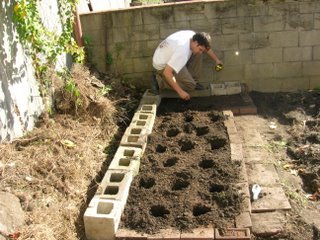Jerusalem Artichokes
This morning I planted Jerusalem Artichokes. For those of you that may not be familiar with this vegetable, I will give a brief description:
The Jerusalem Artichoke is grown for its potato-like tubers which can be eaten raw or cooked. They have a sweet, nutty flavor and also contain inulin, which is a beneficial carbohydrate that is especially good for diabetics. The plant itself is a perennial, which grows 6' to 8' tall. It produces a 4" flower that resembles a daisy and has a chocolate scent.
Jerusalem Artichoke Tubers

As you can see, the tubers resemble a potato. They are generally planted in the fall and are ready for harvest the following August, though a few frosts will improve their taste. If the tubers are not going to be planted right away, it is recommended that you store them in a refrigerator, in order to prevent them from drying out.

When you are planting the tubers, you must cut them into 1.5" diameter pieces that contain 1 or 2 'eyes'. The 'eyes' are little bumps that produce the actual sprout. Above is a picture of the tubers after they have been cut and are ready for planting.
Jerusalem Artichoke Bed

I prepared a bed using bricks in order to prevent the Jerusalem Artichokes from moving into other areas of the garden. Because they are perennials, they have a tendency to spread over an area quickly and are difficult to remove once they are settled. Recommended spacing is 12" to 18" apart in rows, but I chose to stagger them and plant them about 10" to 12" apart, given the limited amount of space I have to work with.

This is the bed, once the Jerusalem Artichokes have been planted. The bed lies in the northern most part of the garden because the plants are very tall and would cast shade if they were placed anywhere else. I expect them to sprout in early spring.

0 Comments:
Post a Comment
<< Home